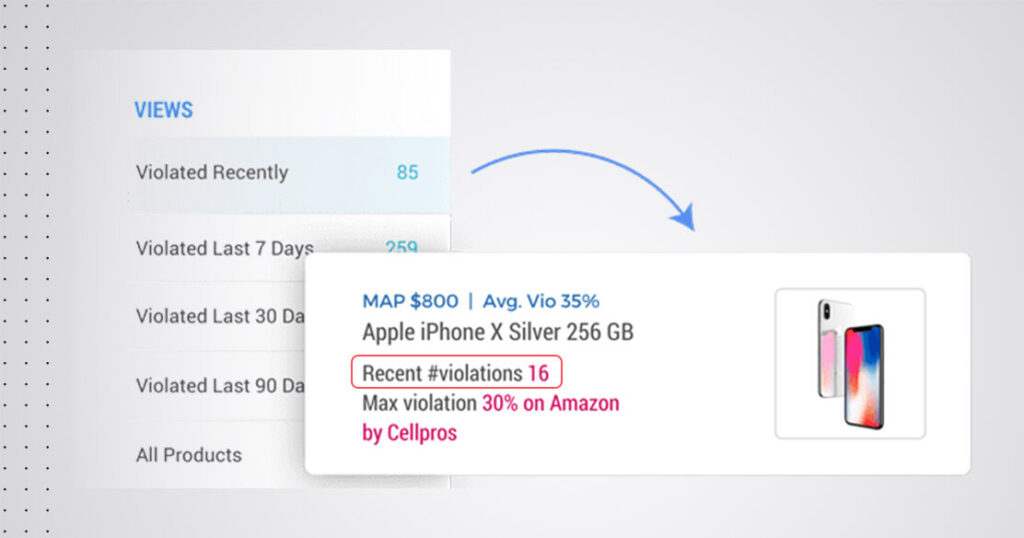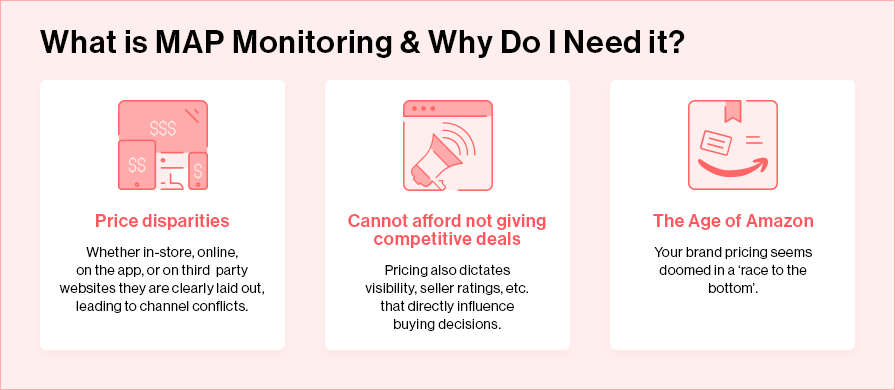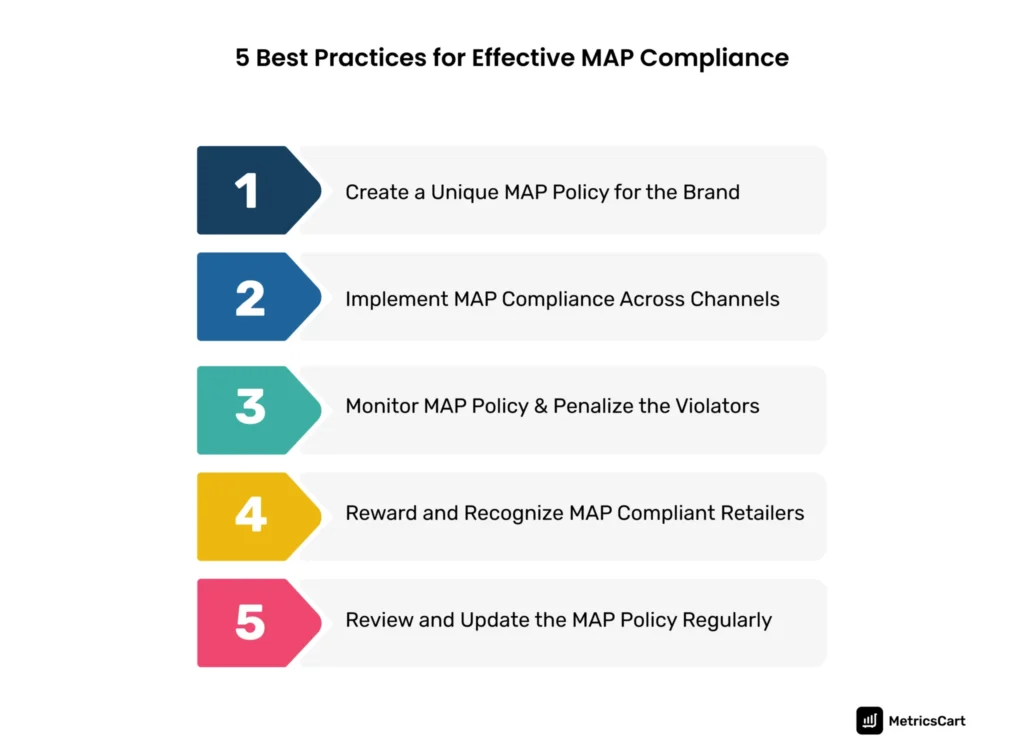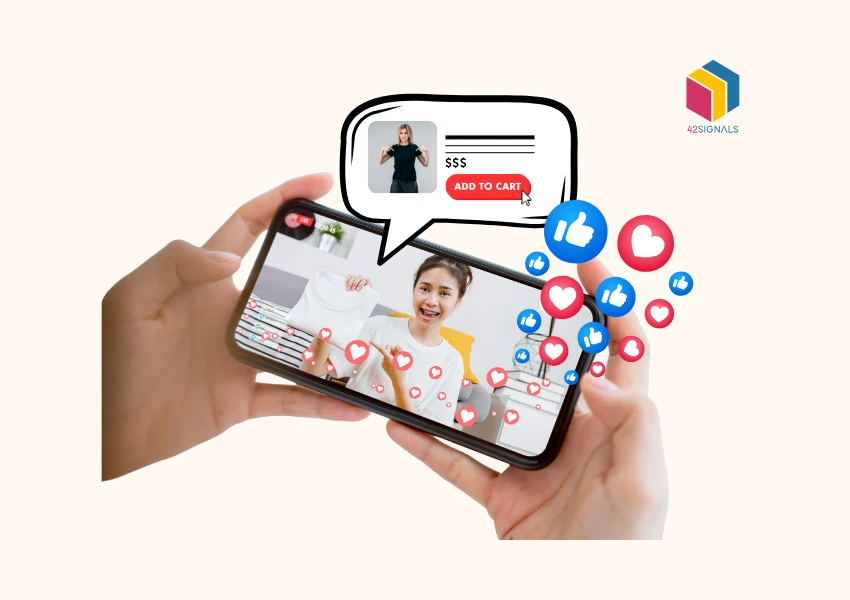Minimum Advertised Price (MAP) policies play a crucial role in maintaining brand integrity and market stability. By setting a floor price for advertised products, brands ensure that their products are not undervalued in the marketplace. Let’s understand the nature of MAP enforcement.
MAP policies help safeguard the brand image by preventing price erosion. When products are consistently advertised at or above the MAP, it upholds the perceived value of the brand, contributing to a positive brand image and customer loyalty.
While MAP policies are legal, they must be implemented ethically and in compliance with antitrust laws. These policies should not dictate the actual sale price but only the advertised price, ensuring fair competition in the market.
The Role of MAP Enforcement in Brand Reputation Management

How MAP Policies Protect Brand Image
By enforcing MAP, brands can control their market positioning and maintain a premium perception. This uniformity in pricing across various retailers helps in establishing a stable market presence.
The Relationship Between MAP and Consumer Perception

Image Source: Priceva
Consistent pricing through MAP enforcement influences consumer perception positively. One of the key ways manufacturers and brands achieve this is through Minimum Advertised Price (MAP) policies. These policies not only regulate how low retailers can advertise a product’s price but also play a significant role in shaping consumer perception. A well-enforced MAP policy fosters an image of quality, exclusivity, and consistency, which can ultimately drive brand loyalty and sales.
Consumers tend to associate price with quality. When a product is consistently advertised at a premium price across different platforms, it creates an impression of value and desirability.
On the other hand, inconsistent pricing—especially heavy discounting—can lead to brand dilution, making consumers question the product’s authenticity, quality, or whether it is worth its original price. By enforcing MAP policies, brands can protect their reputation, maintain a level playing field among retailers, and ensure that their products retain their perceived value.
Setting Up a MAP Enforcement Policy
Establishing Clear MAP Guidelines
For MAP policies to be effective, they must be clear and comprehensive. The foundation of any MAP strategy lies in creating clear and enforceable guidelines that outline the scope of the policy, exceptions, and consequences for non-compliance. These guidelines should specify which products are covered under MAP, how pricing should be advertised, and any promotional allowances that may be permitted.
Transparency is key—retailers and distributors need to fully understand what is expected of them to prevent unintentional violations. This means providing detailed documentation, FAQs, and case scenarios that illustrate the dos and don’ts of MAP compliance. A strong, well-communicated policy prevents misunderstandings and ensures a smoother enforcement process.
Communicating MAP Policies to Retailers and Distributors
An essential aspect of MAP enforcement is effective communication with all stakeholders. Brands must ensure that retailers, distributors, and third-party sellers understand the importance of MAP compliance and how it benefits both the brand and the retailer.
To achieve this, brands can implement:
- Initial training programs: New retail partners should receive in-depth training on MAP policies before they start selling the products.
- Ongoing updates and refresher courses: Given the ever-changing retail environment, periodic updates and training sessions help reinforce the importance of compliance.
- A dedicated support team: A MAP compliance team should be available to answer questions, provide guidance, and address any concerns retailers may have.
With strong communication and support, retailers are more likely to cooperate and adhere to the brand’s pricing policies.
Minimum Advertised Price Enforcement Policies

Image Source: Intelligence Node
Strategies for Effective MAP Monitoring and Enforcement
Enforcing MAP policies requires a proactive approach. Brands should invest in digital monitoring tools that track advertised prices across e-commerce platforms, retail websites, and online marketplaces. Automated price tracking software can quickly identify violations and provide real-time reports, enabling brands to take swift action.
Additionally, establishing a dedicated compliance team can further strengthen enforcement efforts. This team is responsible for monitoring pricing trends, addressing violations, and maintaining positive relationships with retailers. By combining technology with human oversight, brands can ensure better adherence to their MAP policies.
Addressing Non-Compliance: Steps and Procedures

Despite having a strong MAP policy in place, violations may still occur. When this happens, it is crucial for brands to follow a structured approach to address non-compliance.
Common enforcement steps include:
- Issuing a Warning: The first step in MAP enforcement is to notify the retailer of the violation and provide a timeline for correction.
- Action: Immediately upon detection, send a clear, documented communication (e.g., email, certified letter) to the violating retailer. Specify the exact violation (product, advertised price, location/URL, date), cite the relevant section of your MAP policy, and demand immediate correction.
- Rationale: This is often the first official notice. It serves to educate unaware retailers, demonstrate vigilance, and set the expectation for compliance. Many violations stem from misunderstanding or oversight.
- Key Elements: Set a specific, reasonable deadline (e.g., 24-48 hours for online, potentially longer for print). Offer a point of contact for questions. Maintain meticulous records.
- Implementing Temporary Restrictions: If the retailer continues to violate MAP policies, brands may temporarily restrict product supply or marketing support.
- Action: If the violation persists past the warning deadline, escalate to tangible consequences. Common actions include:
- Rationale: This demonstrates seriousness and imposes a direct cost for non-compliance. Restrictions are typically temporary and lifted upon verified correction. The goal is to motivate compliance without severing the relationship immediately.
- Key Elements: Communicate the specific restrictions clearly, the reason, and the steps required to lift them. Ensure the penalty is proportionate to the violation and duration.
- Reducing Trade Privileges: Some brands impose penalties such as reduced discounts, loss of promotional funds, or exclusion from exclusive product launches.
- Action: For repeated violations or failure to respond to initial consequences, implement more significant and potentially longer-term penalties:
- Rationale: This step significantly impacts the retailer’s profitability and competitive advantage. It targets their ability to offer value beyond just price and signals that persistent non-compliance erodes their partnership status.
- Key Elements: Clearly link penalties to specific past violations. Ensure these actions are explicitly allowed within your retailer agreement terms. Maintain detailed documentation for justification.
- Contract Termination: In extreme cases, brands may choose to sever their relationship with persistent violators, removing them from their authorized retailer list.
- Action: In cases of blatant, repeated, and willful disregard for the MAP policy despite previous warnings and penalties, termination of the authorized retailer agreement becomes necessary. This involves formally ending the business relationship and removing the retailer from the list of authorized sellers.
- Rationale: Some bad actors persistently undermine pricing to gain short-term advantage, damaging the brand’s value perception and eroding margins for compliant partners. Termination protects the brand’s integrity and the interests of loyal retailers.
- Key Elements: Termination must strictly follow the contractual terms and notice periods. Consult legal counsel before initiating this step. Prepare for potential fallout and ensure clear communication to the market about authorized channels. Be prepared for attempts to liquidate remaining inventory below MAP.
- Legal Action: If violations persist despite multiple warnings and penalties, taking legal action may be necessary to protect brand integrity and prevent further damage.
- Action: As a last resort, if termination doesn’t halt violations (e.g., the terminated seller continues to advertise below MAP using gray market goods or engages in trademark infringement), pursuing legal remedies may be required. This could involve cease-and-desist letters, lawsuits for breach of contract, trademark infringement, or unfair competition.
- Rationale: Legal action is necessary to stop egregious, ongoing damage when other enforcement mechanisms fail. It protects intellectual property rights and deters other potential violators.
- Key Elements: This step is complex, costly, and time-consuming. It requires strong evidence meticulously gathered throughout the previous enforcement steps. Engage specialized legal counsel experienced in brand protection and distribution law. Success often hinges on the robustness of your documented enforcement history.
By implementing a structured and transparent enforcement process, brands can maintain control over their pricing strategies while preserving retailer relationships.
MAP Enforcement Examples
MAP enforcement is not just a theoretical concept—it is actively practiced by brands across various industries. Below are some real-world examples of how businesses implement and uphold MAP policies.
1. Retailer Education and Partnership
A luxury skincare brand conducts regular training sessions for its retail partners, emphasizing the importance of MAP compliance. By adopting an educational approach, the brand fosters a collaborative relationship with its retailers. In return, retailers receive marketing support, exclusive promotions, and early access to new product launches.
2. Graduated Penalty System
An athletic footwear brand has implemented a structured penalty system to deter MAP violations. The first infraction results in a warning, the second leads to a temporary suspension of product shipments, and repeated violations result in contract termination. This step-by-step enforcement strategy helps ensure long-term compliance.
3. MAP Compliance Incentives
A gourmet food company takes a positive reinforcement approach by rewarding retailers who consistently adhere to MAP policies. These retailers gain access to special pricing, exclusive product lines, and co-branded marketing campaigns. By offering incentives, the brand encourages compliance while strengthening retailer loyalty.
4. Legal Action Against Persistent Violators
A high-end watchmaker takes a strict stance against MAP violations. After issuing multiple warnings and imposing penalties, the company initiates legal proceedings against a retailer that continues to break MAP agreements. This legal action serves as a warning to other sellers, reinforcing the brand’s commitment to MAP enforcement.
Conclusion on MAP Enforcement
In summary, MAP policies and MAP violation monitoring are essential components of a brand’s strategy to maintain its integrity and reputation in the market.
These policies not only help in controlling the brand’s positioning but also significantly influence consumer perception and loyalty.
The successful implementation of MAP policies requires clear guidelines, effective communication, and stringent enforcement. By adhering to these principles, brands can ensure that their value in the marketplace remains strong and consistent.
42Signals helps brands maintain consistent MAP policies on all products across marketplaces. To know how? Contact us at sales@42signals.com
Frequently Asked Questions
What is MAP enforcement?
MAP enforcement refers to a brand or manufacturer ensuring that resellers and retailers follow the Minimum Advertised Price (MAP) policy. This prevents retailers from advertising a product below the set minimum price, helping to maintain fair market pricing and brand value.
What does MAP stand for in compliance?
MAP stands for Minimum Advertised Price, a policy that sets the lowest price a retailer can publicly advertise a product, though they can still sell it at any price they choose in private transactions.
Is a MAP policy legal?
- Yes, MAP policies are legal in the U.S., as long as they apply only to advertised prices and not actual selling prices.
- However, MAP policies cannot involve price-fixing, which would violate antitrust laws.
What’s the difference between MAP and MSRP?
- MAP (Minimum Advertised Price) – The lowest price a product can be advertised for, but retailers can sell it at any price.
- MSRP (Manufacturer’s Suggested Retail Price) – A recommended selling price, but retailers are not required to follow it.
Example:
- If a TV’s MSRP is $1,000, a retailer may choose to sell it for $950.
- If the MAP is $900, they cannot advertise it for less than $900, but they can sell it privately for $850 if they wish.
What is prohibited under the MAP rule?
- Advertising a product below the MAP price, even in digital ads, email promotions, or online listings.
- Displaying hidden discounts (e.g., “Add to Cart to See Price”) if it violates MAP agreements.
- Offering public coupons or promotions that reduce the advertised price below MAP.
Are MAPs admissible in court?
- Yes, MAP agreements can be admissible in court in cases involving contract disputes, antitrust claims, or retailer violations.
- If improperly enforced, MAP policies may lead to legal scrutiny under antitrust laws.
How do brands enforce MAP policies?
- Regular monitoring of online and in-store pricing using tracking tools like Prisync or Wiser.
- Sending violation notices to retailers who advertise below MAP.
- Cutting off supply to repeat offenders who do not comply with MAP policies.
Is MAP enforced globally?
- In the U.S., MAP policies are legal but must follow antitrust guidelines.
- In the EU and Canada, MAP enforcement is more restricted due to stricter competition laws.
What happens if a retailer violates MAP?
- They may receive warnings or supply restrictions from the manufacturer.
- Repeated violations may result in loss of distribution rights or legal action.
Why do manufacturers use MAP policies?
- Protects brand value and profitability by preventing price wars.
- Maintains fair competition among retailers.
- Encourages better service and customer experience by avoiding extreme discounting.





